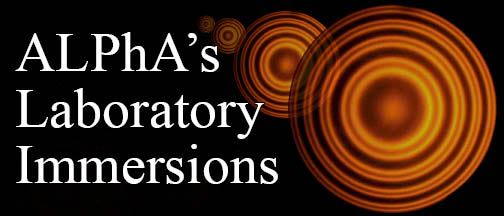- Home
- What We Do
- Laboratory Immersions
- Immersions 2019
- Imm2019UWRF_PICUPChaoticOsc
Mechanical Chaotic Oscillator
University of Wisconsin – River Falls, July 8 - 14, 2019 (PICUP and Immersion)
(4 participants)
Participants in this Immersion will also need to register for the PICUP Summer Faculty Development Workshop.
The rotation of a magnetic dipole in an oscillating magnetic field varies from stable oscillations to chaotic motion, depending on the system parameters. The Mechanical Chaotic Oscillator developed at CSUC allows complete control of all system parameters, and can be used for high-resolution studies of chaotic motion, phase space diagrams, Poincaré plots, and observations of bifurcations on the path to chaos. This particular chaotic system is analogous to a circular pendulum with an oscillating horizontal component of gravitational force.
The apparatus is smaller than a breadbox, connects to a standard USB port for data collection and instrument control, and uses no special lab equipment or dedicated computer hardware. It is controlled by a “Teensy” microcontroller which synthesizes the drive signal and tracks position and velocity of the rotor.

Chaos is a subject of considerable interest; this apparatus allows students to investigate it with full control of damping, drive amplitude and frequency, and central restoring force. The apparatus synthesizes the drive component of field and provides high resolution angle and angular-velocity data at 256 steps per drive cycle. This data allows for easy construction of Poincaré plots and even movies showing how the Poincaré plot evolves over the course of a drive cycle.
Student skills gained by using this apparatus include computer analysis of large data sets, SCPI instrument communications, and hopefully a better understanding of chaotic systems. Immersion participants will gain experience in lasercutting parts, designing custom boards, microcontroller programing, and equipment design. Participants will also build their own apparatus to take home.
Tasks include cutting parts, building and winding coils, electronics assembly and soldering, and firmware flashing. Once the apparatus is constructed (1.5–2 days) participants will program computers (in Python, LabVIEW, or both) to control the experiment and obtain sample data. (1–1.5 days)
Bring a lab notebook and a flash drive. Laptops are optional; participants may find it useful to get things working on their own computers, although computers will be provided here also.
No safety concerns, other than the usual hazards associated with soldering, solvent-welding, and using a lathe.
Host and Mentor:
Eric Ayars. My senior thesis as an undergraduate physics major was on this exact system, but back in the dark ages computers couldn’t track this much data, DAC’s couldn’t generate signals this precisely, and devices like the Teensy 3.1 microcontroller board and benchtop laser cutters were pure science fiction. I love designing and building new instruments for teaching physics, and really enjoy sharing ideas with fellow teachers.
Dr. Eric Ayars, Professor and Chair of Physics, CSU Chico, Campus Box 202, CSU Chico, Chico CA 95929-0202.
Email: eayars@csuchico.edu. Phone: (530) 898-6967.
Please note that the Jonathan F. Reichert Foundation has established a grant program to help purchase apparatus used in Laboratory Immersions. Limitations and exclusions apply, but generally speaking the foundation may support up to 40% of the cost of the required equipment. FPGAs are likely excluded; however, apparatus controlled by an FPGA might be supported.





